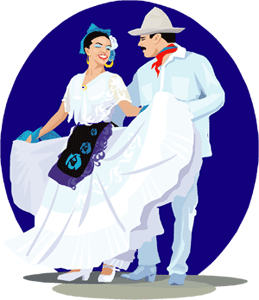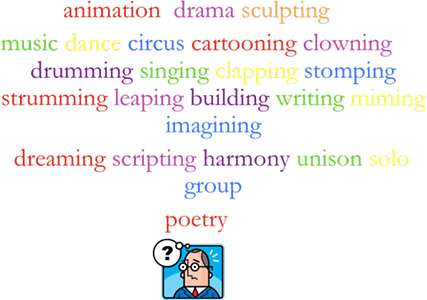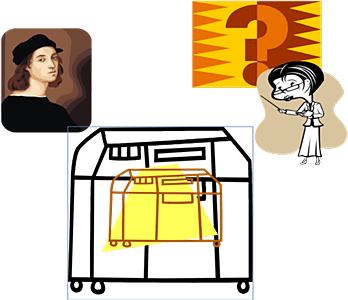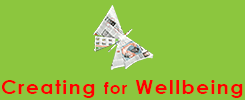Building Partnerships
When artists and teachers work together to promote the mental health and wellbeing of children and young people they enter into a partnership, each bringing different gifts and needs, assumptions and uncertainties. Included here are some pointers to making that partnership work, summarising some of the experiences and observations of co-ordinators and artists involved in the Artists Training Program (ATP). The presentation was originally developed by Artists Training Program Director, Rosalie Hastwell, in response to an invitation from the Catholic Education Office Melbourne (CEOM).
Challenges and Keys to Building Partnerships
This presentation was intended to provide some space for light-hearted reflection in a fairly simple and straightforward way, and to offer some useful pointers for artists and teachers entering new partnerships. While the observations and pointers draw on the experiences of artists, teachers and project co-ordinators who have worked in Festival for Healthy Living (FHL) projects, many of these are also relevant to other types of professional artist and teacher partnerships.

Choose Your Partners…
Artists working for wellbeing programs in schools – such as the CEOM program, or the FHL within Victoria – sometimes have an active role in choosing which school, teacher and class they work with, but more often than not the artist is recruited by the school based on their understandings of the type of artist they are looking for. When artists work within student wellbeing or mental health promotion programs, their fundamental role is to be an agent of change for the wellbeing of children and young people and their communities. The teacher working with the artist is also seen as an agent of change, working with the artist for the mental health and wellbeing of students

Schools and teachers can be overwhelmed by the array of art forms and activities that various artists may be able to offer the school. Often the preference is based on the previous experiences within that school – perhaps arts activities that students have previously responded well to, or something that fits the teachers’ interests or the school’s agenda (for example, perhaps a performance event to fill the newly completed federally funded school hall?!)

Artists from the ATP were asked to brainstorm what “gifts” they thought their art form could bring to the wellbeing of adolescents. Their suggestions, while not pretending to be the ultimate authoritative definition of the qualities and attributes of different arts practices, can offer a useful point of consideration for schools and teachers who would like to partner with a professional artist. For an overview of these gifts, click here.

So, now that we have determined that both the artist and teacher in this partnership are sharing the same goals for student wellbeing and perhaps the type of artist and their art form have been closely considered and are viewed as a “gift” to students, we should be on the track to a highly successful and enjoyable project, right?

…But as is the case in most situations in life, things may not be this simple. The huge array of working styles, personalities, ideas about the way the project should progress etc can lead to complex equations (and, sadly, even at times to non-equations!)

Maybe this image is closer to a representation of the complexity of our human interactions, and especially when we add into the mix the quite different understandings and working styles that artists and teachers can bring to the classroom.
So here are some suggestions to consider in setting out on this exciting but sometimes complex and challenging working relationship. Before starting out on a new FHL project – which was involving several local schools from one area, and a range of artists working in varying art forms – we asked the group to identify those things which they hoped the project would achieve:
Aspirations…

- Self-awareness of ourselves, not just students
- Learn to feel empathy for kids with a disability
- Creative, fun way for people to feel pride and feel included
- Positive, inclusive, realistic participation
- Encourage talent of students
- Build on teamwork rather than individuals
…and Fears
- How will children adapt?
- How will I cope with this?
- Will this create extra work?
- Clashing personalities
- That as a teacher you have to “participate”
- Chaos/class structure collapse
- Merging of professional boundaries
… as well as those things that the teachers and artists were variously fearful or anxious about.
We collected these anonymously so that each person would feel safe to express themselves honestly, and then showed the results back to the group. We then asked the group to identify which of these might have come from an artist about to embark on the project, and which might have come from a teacher about to have an artist arrive in their classroom. Some of the aspirations could be easily attributed to either the artists or the teachers. Obvious ones include teachers’ fears about chaos in the classroom, or – perhaps even worse – having to participate in an arts activity! This sparked discussion in the group and helped to relieve those who were holding the fears and to build empathy in the artists for the teachers’ situation, while also offering some pointers for areas that might require more attention and planning as artists and teachers prepared to work together.
But perhaps just as interesting and valuable was the observation that most of the comments were actually quite difficult to attribute to either one group or the other – the hopes and nervousness about embarking on this new working relationship were often shared. Demonstrating this to the group provided an opportunity for building empathy and also highlighted some areas that each partner needed to be sensitive to and to consider in their approach to planning and working together.
Some Keys to Working Together

- Clarify your goals – process, product and outcomes
- Be realistic – allow for complexity/the unanticipated
- Cultivate a shared sense of appreciation and inquiry
- How and when will you communicate?
- How will you meet challenges together?
- Celebrate and share achievements!
The keys to working together that are outlined here are distilled from the experience and wisdom of artists, teachers and project co-ordinators with experience in making artist–teacher partnerships work well for everyone. They are about attitude and practical action, and may provide you with both a starting point and a point of reflection to come back to during the project.

I had fun with this image… and have also enjoyed the imaginative responses to my question “What is this image representing and who are the characters portraying?” when I have showed it as a slide.
The central image is actually a photocopier. The artist is on the left of course! And who is that person on the right? Artists sometimes need access to the school’s equipment, keys to rooms, etc. One of the issues that can come up for artists working in schools is that even after weeks of visiting the school, the “gatekeepers” – often the office or reception staff – seem unwelcoming. Artists as unfamiliar faces in a highly managed environment may be questioned as to who they are and whether in fact they have a legitimate right to be there. It can help enormously if this relationship is warmly established from the start so that artists do indeed feel welcomed as a legitimate (if very part-time and transitory) part of the school community.
“We learn from and with each other”
And finally, it’s a great thing to remind ourselves of this simple truth that surely is always at the heart of our work together.
To access a PDF version of Rosalie’s Building Partnerships presentation click below.
![]() Building_Partnerships April 2010 pdf – 9 MB
Building_Partnerships April 2010 pdf – 9 MB
To Download:
PC: Right-click on the link select "Save Target As..." or "Save Link As..." |
Mac: Ctrl key + click on the link "Download Linked File As..." or "Save Link As..." |
